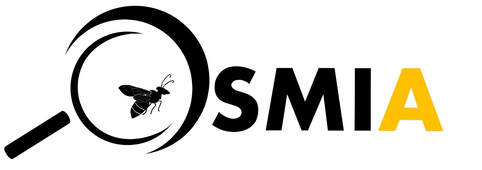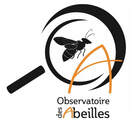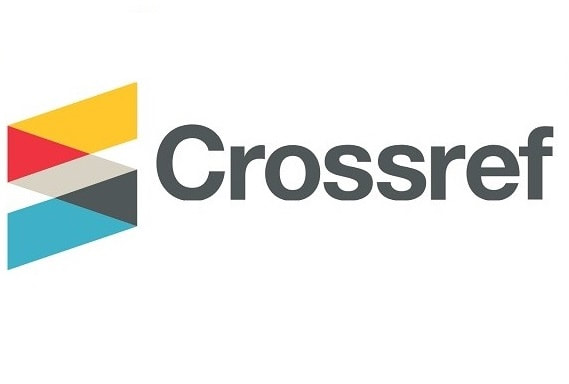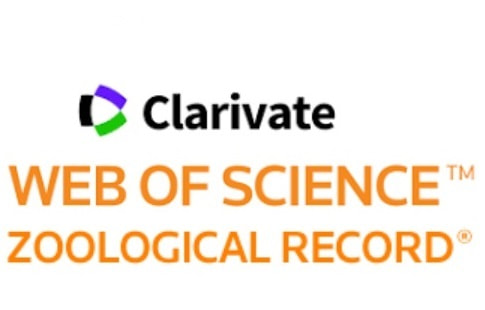Revue d'Hyménoptérologie
Journal of Hymenopterology
ISSN 2727-3806
ARTICLE |
Écologie et distribution de l’abeille originaire d’Asie Megachile sculpturalis Smith 1853 (Apoidea - Megachilidae - Megachilini) : un état des connaissances dix ans après sa première observation en Europe
|
Violette Le Féon, Benoît Geslin
|
Citation
Le Féon, V. & B. Geslin (2018). Écologie et distribution de l’abeille originaire d’Asie Megachile sculpturalis Smith 1853 (Apoidea - Megachilidae - Megachilini) : un état des connaissances dix ans après sa première observation en Europe. Osmia, 7: 31-39. https://doi.org/10.47446/OSMIA7.6
Published (online) Summer 2018
Indexation • Archivage - Archiving
Résumé
Megachile sculpturalis est une abeille originaire de l’est de l’Asie observée pour la première fois en Europe en 2008 à Allauch près de Marseille (France). Elle a également été détectée aux États- Unis dès 1994 et s’est depuis largement répandue en Amérique du Nord. Nous présentons ici un état des connaissances sur son écologie et sa distribution géographique.
Mots-clefs
Megachile sculpturalis, distribution, espèce exotique, préférences alimentaires, nidification
Title (translation)
Ecology and distribution of the Asian bee Megachile sculpturalis Smith 1853 (Apoidea - Megachilidae - Megachilini): a state of knowledge ten years after its first observation in Europe
Abstract
Megachile sculpturalis (the Giant Resin Bee) is a bee species native to East Asia that has been observed for the first time in Europe in 2008 in Allauch near Marseille (France). In the USA, it has been reported in 1994 and has since then rapidly expanded through North America. We here provide a review on its ecology and its geographical distribution.
Keywords
Megachile sculpturalis, distribution, exotic species, diet preferences, nesting behaviour
Références - References
Le Féon, V. & B. Geslin (2018). Écologie et distribution de l’abeille originaire d’Asie Megachile sculpturalis Smith 1853 (Apoidea - Megachilidae - Megachilini) : un état des connaissances dix ans après sa première observation en Europe. Osmia, 7: 31-39. https://doi.org/10.47446/OSMIA7.6
Published (online) Summer 2018
Indexation • Archivage - Archiving
- DOI: https://doi.org/10.47446/OSMIA7.6
- Zoobank (ICZN): http://zoobank.org/4FCFDEB4-0D1D-4ABD-97E7-0064ED7A4DD4
- HAL (CNRS-INRAE): https://hal.archives-ouvertes.fr/hal-01858807
- Zenodo (CERN): https://zenodo.org/record/4391092
Résumé
Megachile sculpturalis est une abeille originaire de l’est de l’Asie observée pour la première fois en Europe en 2008 à Allauch près de Marseille (France). Elle a également été détectée aux États- Unis dès 1994 et s’est depuis largement répandue en Amérique du Nord. Nous présentons ici un état des connaissances sur son écologie et sa distribution géographique.
Mots-clefs
Megachile sculpturalis, distribution, espèce exotique, préférences alimentaires, nidification
Title (translation)
Ecology and distribution of the Asian bee Megachile sculpturalis Smith 1853 (Apoidea - Megachilidae - Megachilini): a state of knowledge ten years after its first observation in Europe
Abstract
Megachile sculpturalis (the Giant Resin Bee) is a bee species native to East Asia that has been observed for the first time in Europe in 2008 in Allauch near Marseille (France). In the USA, it has been reported in 1994 and has since then rapidly expanded through North America. We here provide a review on its ecology and its geographical distribution.
Keywords
Megachile sculpturalis, distribution, exotic species, diet preferences, nesting behaviour
Références - References
- Amiet F, 2012. Die Blattschneiderbiene Megachile sculpturalis Smith, 1853 (Hymenoptera, Apidae) nun auch in der Schweiz. Entomo Helvetica 5 : 157-159. https://sciencesnaturelles.ch/uuid/cc0e1bcc-51df-5391-8a4c-8ef759b3938d?r=20200527115808_1565134813_6879f101-22f6-5c84-bcca-0dd90fd35e6b
- Andrieu-Ponel V, Ponel P, Le Féon V, Geslin B & Duvallet G, 2018. À propos du comportement de butinage de Megachile sculpturalis Smith, 1853 en France méditerranéenne (Nîmes et Montpellier) (Hymenoptera, Megachilidae). Bulletin de la Société entomologique de France 123(1) : 49-54. https://doi.org/10.32475/bsef_1984
- Barthell JF, Frankie GW & Thorp RW, 1998. Invader effects in a community of cavity nesting megachilid bees (Hymenoptera: Megachilidae). Environmental Entomology 27 : 240-247. https://doi.org/10.1093/ee/27.2.240
- Barthell JF, Thorp RW, 1995. Nest usurpation among females of an introduced leaf- cutter bee, Megachile apicalis. Southwestern Entomologist 20: 117-124. http://agrilife.org/sswe/files/2017/04/SWE_V20.pdf
- Bartomeus I, Ascher J S, Gibbs J, Danforth BN, WagnerR DL, Hedtke SM & Winfree R, 2013. Historical changes in northeastern US bee pollinators related to shared ecological traits. Proceedings of the National Academy of Sciences 110 : 4656–4660. https://doi.org/10.1073/pnas.1218503110
- Batra SWT, 1998. Biology of the Giant Resin Bee, Megachile sculpturalis Smith, a conspicuous new immigrant in Maryland. The Maryland Naturalist 42 : 1-3.
- Bortolotti L, Luthi F, Flaminio S, Bogo G, Sgolastra F, 2018. First record of the Asiatic bee Megachile disjunctiformis in Europe. Bulletin of Insectology 71 : 143-149. http://www.bulletinofinsectology.org/pdfarticles/vol71-2018-143-149bortolotti.pdf
- Dillier F-X, 2016. Eingeschleppte Asiatische Mörtelbiene Megachile sculpturalis Smith, 1853 (Hymenoptera, Apidae) erstmals nördlich der Alpen gesichtet. Entomo Helvetica 9 : 153-156. https://sciencesnaturelles.ch/uuid/bf03002f-a90f-5502-99bd-e7356fb8c4f0?r=20200527115808_1565135441_26f3a03e-8740-5803-995f-31cb34745cbd
- Dufrêne É, Genoud D & Bourlet P, 2016. Sur la distribution en France de Lithurgus cornutus Fabricius, 1827 ( Hymenoptera Megachilidae) : apport de données récentes. Osmia 6 : 16-21. https://doi.org/10.47446/OSMIA6.5
- Falk S & Lewington R, 2015. Field guide of the bees of Great Britain and Ireland. British Wildlife Field Guides. Bloomsbury.
- Geslin B & Morales CL, 2015. New records reveal rapid geographic expansion of Bombus terrestris Linnaeus, 1758 (Hymenoptera: Apidae), an invasive species in Argentina. Check List 11(3) : a1620 (6 pages). https://doi.org/10.15560/11.3.1620
- Gibbs J & Dathe HH, 2017. First records of Hylaeus (Paraprosopis) pictipes Nylander, 1852 (Hymenoptera: Colletidae) in North America. Check List 13(3) : a2116 (6 pages). https://doi.org/10.15560/13.3.2116
- Goulson D, 2003. Effects of introduced bees on native ecosystems. Annual Review of Ecology, Evolution and Systematics 34 : 1-26. https://doi.org/10.1146/annurev.ecolsys.34.011802.132355
- Hinojoza-Díaz IA, Yáñez-Ordóñez O, Chen G, Townsend Peterson A & Engel MS, 2005. The North American invasion of the giant resin bee (Hymenoptera: Megachilidae). Journal of Hymenoptera Research 14 : 69-77. http://hdl.handle.net/1808/16470
- Hinojoza-Díaz IA, 2008. The giant resin bee making its way west: first record in Kansas (Hymenoptera: Megachilidae). ZooKeys 1 : 67-71. https://doi.org/10.3897/zookeys.1.17
- Kovács T, 2015. Megachile sculpturalis Smith, 1853 in Hungary (Hymenoptera, Megachilidae). Folia Historico-naturalia Musei Matraensis 39: 73-76.
- Laport RG & Minckley RL, 2012. Occupation of active Xylocopa virginica nests by the recently invasive Megachile sculpturalis in Upstate New York. Journal of the Kansas Entomological Society 85 : 384-386. https://doi.org/10.2317/0022-8567-85.4.384
- Le Féon V, Aubert M, Genoud D, Andrieu-Ponel V, Westrich P & Geslin B, 2018. Range expansion of the Asian native giant resin bee Megachile sculpturalis (Hymenoptera, Apoidea, Megachilidae) in France. Ecology and Evolution 8 : 1534-1542. https://doi.org/10.1002/ece3.3758
- Mangum WA & Brooks RW, 1997. First records of Megachile (Callomegachile) sculpturalis Smith (Hymenoptera: Megachilidae) in the continental United States. Journal of the Kansas Entomological Society 70 : 140-142. https://www.jstor.org/stable/25085766
- Macivor JS & Packer L, 2015. ‘Bee hotels’ as tools in native pollinator conservation: a premature verdict? PLoS ONE 10 : e0122126. https://doi.org/10.1371/journal.pone.0122126
- Mangum WA, Sumner S, 2003. A survey of the North American range of Megachile (Callomegachile) sculpturalis, an adventive species in North America. Journal of the Kansas Entomological Society 76 : 658-662. https://www.jstor.org/stable/25086168
- Michener CD, 2007. The bees of the world. 2nd ed. The Johns Hopkins University Press, Baltimore, 913 p.
- Morales CL, Arbetman MP, Cameron SA & Aizen MA, 2013. Rapid ecological replacement of a native bumble bee by invasive species. Frontiers in Ecology and the Environment 11 : 529-534. https://doi.org/10.1890/120321
- Nieto A, Roberts S P M, Kemp J, Rasmont P, Kuhlmann M, García Criado M, Biesmeijer J C, Bogusch P, Dathe H H, De la Rúa P, De Meulemeester T, Dehon M, Dewulf A, Ortiz-Sánchez F J, Lhomme P, Pauly A, Potts S G, Praz C, Quaranta M, Radchenko V G, Scheuchl E, Smit J, Straka J, Terzo M, Tomozii B, Window J & Michez D, 2014. European Red List of Bees. Publication Office of the European Union, Luxembourg, 84 pp. https://doi.org/10.2779/77003
- Quaranta M, Sommargua A, Balzarini P & Felicioli A, 2014. A new species for the bee fauna of Italy: Megachile sculpturalis continues its colonization of Europe. Bulletin of Insectology 67 : 287-293. http://www.bulletinofinsectology.org/pdfarticles/vol67-2014-287-293quaranta.pdf
- Parkys K, Tripodi A, Sampson B, 2015. The Giant Resin Bee, Megachile sculpturalis Smith: new distributional records for the Mid- and Gulf-south USA. Biodiversity Data Journal 3: e6733. https://dx.doi.org/10.3897%2FBDJ.3.e6733
- Rasmont P, Devalez J, Pauly A, Michez D & Radchenko VG, 2017. Addition to the checklist of IUCN European wild bees (Hymenoptera: Apoidea). Annales de la Société Entomologique de France (N.S.) 53 : 17-32. https://doi.org/10.1080/00379271.2017.1307696
- Roulston T & Malfi R, 2012. Aggressive eviction of the Eastern Carpenter Bee (Xylocopa virginica (Linnaeus)) from its nest by the Giant Resin Bee (Megachile sculpturalis Smith). Journal of the Kansas Entomological Society 85 : 387-388. https://doi.org/10.2317/0022-8567-85.4.387
- Russo L, 2016. Positive and negative impacts of non-native bee species around the world. Insects 7 : 69. https://doi.org/10.3390/insects7040069
- Strange E JP, Koch JB, González VH, Nemelka L & Griswold T, 2011. Global invasion by Anthidium manicatum (Linnaeus) (Hymenoptera: Megachilidae): assessing potential distribution in North America and beyond. Biological Invasions 13 : 2115-2133. https://doi.org/10.1007/s10530-011-0030-y
- Vereecken NJ & Barbier E, 2009. Premières données sur la présence de l’abeille asiatique Megachile (Callomegachile) sculpturalis Smith (Hymenoptera, Megachilidae) en Europe. Osmia 3 : 4-6. https://doi.org/10.47446/OSMIA3.3
- Westrich P, Knapp A & Berney I, 2015. Megachile sculpturalis S m i t h 1 8 5 3 (Hymenoptera, Apidae), a new species for the bee fauna of Germany, now north of the Alps. Eucera 9 : 3-10. https://www.zobodat.at/pdf/Eucera_9_2015_0001-0010.pdf
- Zayed A, Constantin SA, Packer L, 2007. Successful biological invasion despite a severe genetic load. PLoS ONE 2 : e868. https://doi.org/10.1371/journal.pone.0000868










